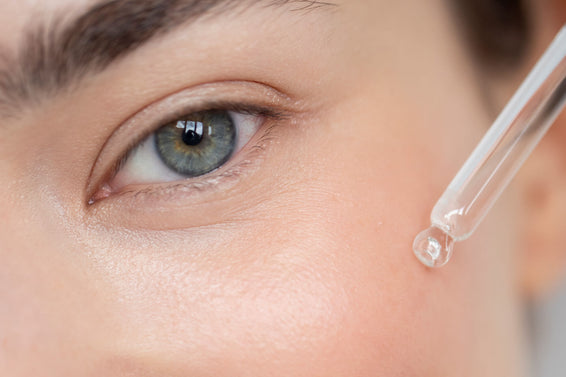Relaxing hair treatments are popular among women who have textured hair. The sleek and smooth appearance never fails to captivate everyone. While it is easier to manage relaxed hair, maintaining its sleek and smooth style is not so relaxing after all. You have to maintain the smooth texture of your hair while giving it body. Relaxing treatments can increase hair damage as well.
Nevertheless, these hair concerns should not keep you from going for relaxers every now and then. Here are the top 9 challenges for relaxed hair junkies and tips on how you can deal with them. These tips help protect the sleekness and smooth texture of relaxed hair. Enjoy a shiny and bouncy hair with these easy hair hacks.

#1 Managing Root Growth
For relaxed hair, the number one concern is new root growth. It takes effort to maintain the sleek and smooth look of relaxed hair after relaxing treatments. New growth is not as smooth as relaxed hair, making it hard to comb through your locks. There is a part of your hair where new growth and relaxed tresses meet. This part of your hair is very brittle and prone to breakage. Combing or pulling hair can make the strands snap. Breakage can make relaxed hair dry, frizzy, and rough. It is important to keep this part of your hair tamed in order to protect the shine and texture of relaxed hair.
How to Deal With It
#2 Detangling Hair
You might think that detangling relaxed hair is easy due to its smooth and sleek appearance. However, dry hair becomes rough and harder to comb through. Without a proper hair care routine, relaxed hair can become frizzy and tangled. Hair tangles are very painful and they often lead to breakage. The more tangled your hair becomes, the harder it is to manage it.

#3 Strengthening Weak Hair
If relaxed hair becomes prone to breakage, it might be because of increased porosity and brittleness. Chemical treatments tend to do this to your hair. Chemicals applied to hair break the disulfide bonds to give your tresses a straight texture. However, this damages the natural barrier of hair and increases the porosity of hair strands. Without a proper hair care routine, your hair can become dry, rough, and weak. Weak hair falls and breaks easily.
#4 Getting Rid of Split Ends
If your hair becomes frayed at the tips, you need some serious hair treatment. Never underestimate the effects of split ends on your hair. Split ends are a sign that your hair is damaged. It opens up the shaft as well, which increases the chance of your hair becoming dry and brittle. Split ends happen when you use too much heat on hair. Heat can destroy the protein layers of hair, making it brittle and prone to breakage. The friction as the tips of your hair brush against your skin and clothes can increase split ends too.

#5 Air Drying Without Excessive Shedding
For relaxed hair, reducing the number of times that you expose it to heat helps prevent hair damage. Air drying might seem like a good idea until you brush your hair – several strands fall out, some short and some are long. The method of drying your hair makes a difference in its shine and volume. However, when you don’t air dry properly, it can make your hair break and fall. Rubbing your hair with a towel can increase frizziness and split ends. You should also dry 80% of your hair before you leave. Wet hair attracts dirt and toxins, which cling to the strands.
#6 Moisturizing Hair
Even when you relax your hair, there’s no guarantee that it will stay soft and smooth. Moisture is essential to keep hair healthy and strong. Relaxed hair may feel soft and smooth; however, this does not mean that it is moisturized. While using conditioners help make hair look smooth and shiny, it is not enough to moisturize relaxed hair. Relaxed hair treatments damage your hair and the cuticles. It dries faster due to the chemical treatment.

#7 Building Body
There are many benefits to getting a relaxing treatment. It makes hair straight, smooth, and sleek. But there are downsides to relaxing hair. Loss of volume is a common concern for relaxed hair junkies. Relaxed hair can look flat and limp especially the first few weeks after the treatment. Applying mousse, hairspray, and gels to relaxed hair can make it dry and more brittle. They can also further damage the cuticles of hair by robbing it of moisture.
#8 Retaining Length
Relaxed hair will look longer because the strands are stretched. However, keep in mind that due to increased breakage and shedding, your hair will feel like it is not growing as much as you would want. Without a proper hair care routine, the new roots will grow curly, which is equal to hair growing a few centimeters a year. The length of relaxed hair may seem shorter as time passes after the treatment. This is because breakage at the tips of your hair is common. Excessive breakage leaves your hair noticeably shorter.

#9 Preventing Hair Breakage
Hair breakage prevents your hair from achieving its best form. If you feel like your hair is not growing at all – consider the chances that your hair is prone to breakage. Dry and brittle hair tends to lose volume and shine over time. Simple habits such as tying your hair or using a blow dryer can make your hair break. It is important to be careful when handling relaxed hair because it breaks easily. Even the products that you use can affect the strength and health of relaxed hair. Sulfate is a big no-no for relaxed tresses. It leaves your hair dry and rough. The same goes for equally harsh chemicals.
How to Deal With It
TIP 1: Use dry shampoo a few times in a week. Other than limiting the number of times you wash your hair, you can also use a dry shampoo instead. It removes the dirt, excess oil, and flakes on the scalp, without getting rid of necessary moisture. Dry shampoos leave your hair and scalp fresh and clean after!
TIP 2: Switch to nutrient and protein-rich hair products. Relaxed hair needs different products that restore its strength after the treatment. You might need to get rid of your entire collection of hair products in order to maintain your hair’s sleek and smooth appearance. Castor oil is a good source of nutrients and protein that strengthen hair. It fortifies your hair to reduce breakage while promoting growth of resilient strands. You can use shampoos and conditioners infused with castor oil to keep relaxed hair shiny and manageable. Get these products at great prices here.
Bonus Guide:
Fighting these relaxed hair challenges isn't always easy. But if you know the right products to choose and to avoid, you'll never be wrong. Here's a quick guide to help you find out which ingredients to avoid when looking at different products for your relaxed hair.

Achieve the sought-after smoothness of relaxed hair with suitable hair products. Remember that nourishment and moisture are the best friends of healthy hair. Jump through these hair hurdles with tips that ensure your hair stays lustrous even after relaxing hair treatments.
















